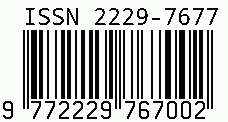
International Journal on Science and Technology
E-ISSN: 2229-7677
•
Impact Factor: 9.88
A Widely Indexed Open Access Peer Reviewed Multidisciplinary Bi-monthly Scholarly International Journal
Plagiarism is checked by the leading plagiarism checker
Call for Paper
Volume 16 Issue 3
July-September 2025
Indexing Partners



















Aerosolized Pathogens and Human Health: Transmission Dynamics in Urban Environments
| Author(s) | Shivani Tomar, Harsha Sharma |
|---|---|
| Country | India |
| Abstract | Urban environments, with their dense populations and complex infrastructure, present unique challenges, and opportunities for understanding the transmission dynamics of aerosolized pathogens. This study explores how pathogens suspended in aerosols contribute to disease spread in Urban settings, emphasizing respiratory infections such as influenza, tuberculosis, and COVID-19. Urban factors—such as population density, indoor crowding, public transportation, ventilation systems, and socio-economic disparities—significantly influence the generation, dispersion, and inhalation of infectious aerosols. We synthesize recent research across epidemiology, environmental science, and urban planning to characterize how aerosolized pathogens behave in real-world urban conditions. Special attention is given to environmental determinants such as air flow patterns, temperature, humidity, and pollution, which can enhance pathogen survival and transmission. Human behaviour—ranging from mobility patterns to mask-wearing and hygiene practices—also shapes transmission trajectories. The review highlights case studies from major cities worldwide, comparing outbreak patterns and mitigation outcomes. We discuss emerging technologies for detecting airborne pathogens and modelling their spread in complex urban microenvironments. These include sensor networks, computational fluid dynamics, and data-driven predictive modelling. Furthermore, the paper evaluates the effectiveness of public health interventions such as ventilation improvements, air purification, and urban design strategies aimed at reducing transmission risk. This research underscores the need for interdisciplinary collaboration and targeted urban health policies that incorporate airborne transmission science into public health planning. Ultimately, adapting urban systems to minimize the risk of aerosolized pathogen spread will play a critical role in safeguarding human health in the increasingly urbanized world. |
| Keywords | Aerosolized pathogens, Pathogen dispersion, Public health, Respiratory infections, Urban air quality, Urban population density. |
| Published In | Volume 16, Issue 2, April-June 2025 |
| Published On | 2025-06-06 |
| DOI | https://doi.org/10.71097/IJSAT.v16.i2.6001 |
| Short DOI | https://doi.org/g9pz62 |
Share this


CrossRef DOI is assigned to each research paper published in our journal.
IJSAT DOI prefix is
10.71097/IJSAT
Downloads
All research papers published on this website are licensed under Creative Commons Attribution-ShareAlike 4.0 International License, and all rights belong to their respective authors/researchers.

